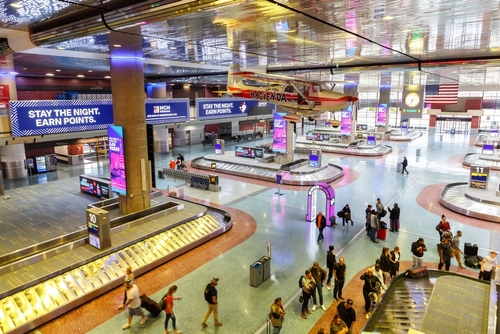
Transportation Security Administration (TSA) PreCheck passengers at Harry Reid International Airport in Las Vegas will soon become the first travelers in the country to use a prototype checkpoint system that allows for self-service screening.
By mid-March, the TSA and the Department of Homeland Security (DHS) Science and Technology Directorate (S&T) will have readied the technology for testing. Designed, developed and tested at the TSA Systems Integration Facility in Virginia, the system is focused on a video monitor that offers guidelines for passengers to complete screening. This screening still utilizes the standards and rules required by manned TSA PreCheck lanes.
On-person alarm information provided by the system will allow passengers to resolve most issues and avoid a pat-down or secondary screening procedure along the way. Once the screening process is complete, passengers will be allowed to travel through automated exit doors and gather their belongings. As testing continues, Transportation Security Officers (TSOs) will be on hand to offer assistance as needed.
“We are constantly looking at innovative ways to enhance the passenger experience, while also improving security,” TSA Administrator David Pekoske said. “This self-service prototype allows our trusted travelers to complete the screening process at their own pace. Testing at the Innovation Checkpoint in Las Vegas gives us an opportunity to collect valuable user data and insights, and explore opportunities to apply parts of the prototype to other airport security checkpoints. I am grateful for our partners in S&T and LAS airport, who were critical in bringing this vision to reality.”
Conceived as a way to deal with increased annual passenger loads, the self-service system was the first to succeed in lab testing. It followed contracts awarded to three companies in late 2021 to develop self-screening concepts, prototypes and hardware. The others remain in development.
No wider deployment will be planned until TSA and S&T can study the results of the assessment at Harry Reid International Airport. During assessment, TSA will collect passenger feedback and data on the system’s performance, design, cybersecurity, human factors and other variables, then use that data to inform design, development, feasibility and viability.




